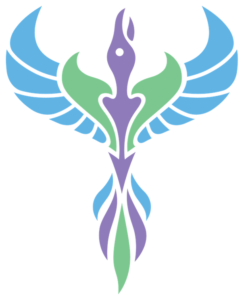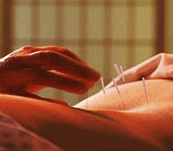Posts by adminjosh
Fighting Sciatica
Few things ruin a good day like a flare-up of sciatica. The condition characterized by pain and stiffness in the lower back, aching in the buttocks, and numbness and tingling in the lower extremities can make it difficult to stand up, let alone get on with your day. The longest nerve in the human body, running adjacent to the piriformis muscle, the sciatic nerve is responsible for powering many of the muscles in the back side of the lower body, which means that when things go wrong with the sciatic nerve, the results can be serious. The most common things that contribute to sciatic nerve compression are herniated discs, impingement by the piriformis muscle and a stiff, imbalanced lower back.
Chiropractic is a perfect treatment for easing the discomfort associated with sciatica. Chiropractic adjustment and the decompression associated with spinal traction are great modalities for responding to the kind of impingement to the sciatic nerve that results from a herniated disc or a subluxation. When muscles, especially crucial ones such as the piriformis, become strained, they can also put pressure on the sciatic nerve. This kind of condition responds well to trigger point therapy, which targets specific points and releases the area from tension.
But chiropractic is only the beginning; to truly break the grip of recurrent sciatica from your life means to make a commitment to regular exercise and stretching that will keep the area free of tension on a regular basis. At our office, we are concerned with your quality of life and we would like to help you improve it without the necessity of surgical or pharmaceutical intervention.
Get Excited about Snacking
Meals are most important but snacking has its place too!
And it’s right in between! Snacking helps regulate blood sugar, which is important for people who need to stay steady throughout the day. When blood sugar drops low, we feel light-headed, hungry and stressed out- this is the classic formula known as “hangriness.” This drives us to crave something quick and satiating- say a chocolate bar. Which then does the opposite, spikes blood sugar levels, causing the body to produce more insulin, uptaking the glucose faster and leaving you low again. Snacks can help us stay balanced.
An equation for healthy snacking
- 150-200 calories
- Blend of carbs, protein and healthy fats
- Nutrient density
- Leave out processed fats and sugars
Some snack-y ideas that fit the formula:
- Apple and peanut butter
- Granola and yogurt
- Lunch meat and low-fat cheese
- Quinoa
- Hard boiled egg and hummus
- Certain nutrition bars
In a very basic scenario, you could split the difference between breakfast, lunch and dinner; i.e.: breakfast at 8, first snack at 10, lunch between 12-1, second snack at 3 and dinner at 6. But every schedule is different and a snacking schedule is rarely rigid. The important thing is to stay in touch with your body- know the warning signs of blood sugar dropping and hasten to eat something healthy before you cave into your sweet tooth’s tastiest desires. When done right, snacking can be fun and keep you sane!
Exercises to Help Rehabilitate & Strengthen
Here are some excellent back strengthening exercises to help rehabilitate & strengthen your spinal muscles.
First of all a 20 to 30 min Cardio-Vascular warm-up is imperative. Rowing, biking, jump-rope, swimming, elliptical are all good options.
Next, begin with EXTENSOR muscle work & strengthening. These are the muscles (triceps, latts, quads, buttock & back) that help us stand up straight, with straight arms & legs.
It is always best, whenever possible, to do ‘cross-crawl’ exercises. This means opposite arm & leg engagement. For example, imagine throwing a javelin – your eyes will be on the hand in extension & you will be standing on the opposite leg. We are designed this way & it is the best way to exercise.
Finally, wind down w/ flexor muscle exercise – only now do you do any biceps, pect & ab work! And finish w/ a few minutes of stretching.
Plan routine work-outs 3 to 4 times a week. Keep a well aligned spine with chiropractic adjustments & enjoy a long & healthy life!
Dr. Karen A. Thomas Park Slope Community Chiropractic & Acupuncture
Nutrition
Diet and Nutrition
They’re right. You ARE – and WILL BE – what you eat.
Foods. Fluids. Supplements. Dietary aids. Medicines. All contribute to the bio-chemical makeup of our bodies.
 Many people do not maintain healthy diets and may suffer from digestive disorders and other conditions aggravated by poor eating habits. Studies show that 80% of American adults are chronically dehydrated. The balance of macro-nutrients (proteins, carbohydrates, and fats), as well as micro-nutrients (vitamins, minerals, and enzymes), is essential for the cells and organs of the body to function properly. Poor supplies of macro- and micro-nutrients to the cells and tissues make it difficult for the body to work properly. Sluggish cell activity may result in overall body fatigue, susceptibility to infection, chronic inflammatory disorders – including digestive problems, arthritis, and allergies.
Many people do not maintain healthy diets and may suffer from digestive disorders and other conditions aggravated by poor eating habits. Studies show that 80% of American adults are chronically dehydrated. The balance of macro-nutrients (proteins, carbohydrates, and fats), as well as micro-nutrients (vitamins, minerals, and enzymes), is essential for the cells and organs of the body to function properly. Poor supplies of macro- and micro-nutrients to the cells and tissues make it difficult for the body to work properly. Sluggish cell activity may result in overall body fatigue, susceptibility to infection, chronic inflammatory disorders – including digestive problems, arthritis, and allergies.
In the emerging field of nutrigenomics studies show that all ‘sizes’ of nutrients do not fit all people. In other words, every individual has an optimal caloric standard, as well as a nutritional combination that best suits them. The science of nutrigenomics advocates that we adopt an ODA (Optimal Daily Allowance) to reflect this finding, and abandon the model of RDA (Recommended Daily Allowance) that is based on a generalized global ‘minimum’ of nutrients necessary to avoid disease.
The current so-called “Modern American Diet” is high in meat sources, processed foods, sweets, colas, alcohol, coffee, tobacco, and pharmacologic medications. This diet contributes to a high-acid (low pH) condition in the body that injures cells and impairs the ability of the body’s organs – including the brain – to function optimally.
The American diet and its resulting high levels of systemic acids is made worse with the sedentary lifestyle many people have adopted. Inactivity does further damage to the internal workings of the body. Lack of fresh air, shallow breathing, and reduced oxygen/carbon dioxide exchange add to the body’s acidic state.
Systemic acidosis is associated with chronic inflammatory disorders (arthritis, lumbago, headache), auto-immune diseases (RA, chronic fatigue syndrome, fibromyalgia), cardio-vascular disorders (leading to increased risk of heart attack and stroke) and even certain types of cancer.
The good news is that we are ever changing organisms and many high-risk conditions can be reversed with improvements in diet and nutrition.
At Community Chiropractic & Acupuncture, with re-education, instruction, and routine monitoring we help patients recover their health. We recommend dietary changes, vitamin and mineral supplements and new eating habits.
Increasing intake of healthy proteins like chicken, fish, or non-meat sources such as beans and nuts; fresh leafy green vegetables; complex carbohydrates, and thirst-quenching health drinks invigorate the cells, the organs, and the entire body.
With a helping hand, food choices and eating habits improve. Results become evident with more energy, less pain, clearer mental function and lost inches.
A healthy diet that includes appropriate, individually prescribed nutritional supplements, is essential to rebuilding lasting health and well-being. No one is ‘put on a diet’. We educate and encourage informed healthy choices. As you learn about and make improved food choices, you will begin to look better and feel healthier.
Energy Balance
Acupuncture / Traditional Chinese Medicine (TCM)
Increasing Energy Flow, Establishing Balance & Creating Internal Harmony
 TCM (Traditional Chinese Medicine) is an ancient healing art founded nearly 4,000 years ago in the Buddhist monasteries of China and Tibet. It integrates spiritual beliefs with theories of life-force and bio-energetics, Qi ( or Chi, pronounced “chee”). The priests treated members of their communities with herbs, animal products, acupuncture, cupping (pressure cups applied to the back), and moxabustion (a warming herb that is ‘smoked’ along meridian points). Needle acupuncture (insertion of thin, sterile needles along energy points of the body) evolved from a discernment of energy meridian points along the skin’s surface that correlates with organs such as the lungs, liver, stomach and kidneys. All forms of body disharmony, illness and disease are effectively treated by restoring harmony to the qi along the meridians and thus healing organs and body systems.
TCM (Traditional Chinese Medicine) is an ancient healing art founded nearly 4,000 years ago in the Buddhist monasteries of China and Tibet. It integrates spiritual beliefs with theories of life-force and bio-energetics, Qi ( or Chi, pronounced “chee”). The priests treated members of their communities with herbs, animal products, acupuncture, cupping (pressure cups applied to the back), and moxabustion (a warming herb that is ‘smoked’ along meridian points). Needle acupuncture (insertion of thin, sterile needles along energy points of the body) evolved from a discernment of energy meridian points along the skin’s surface that correlates with organs such as the lungs, liver, stomach and kidneys. All forms of body disharmony, illness and disease are effectively treated by restoring harmony to the qi along the meridians and thus healing organs and body systems.
Western medicine is currently researching the ways in which TCM and acupuncture actually work. Modern science has developed the technology to detect and measure the subtle bio-energy and confirm the acupuncture points along the meridians. Although this research is still ongoing, Western medicine has acknowledged the positive health effects of TCM, particularly needle acupuncture.
According to TCM, the meridians traverse all tissues and organ systems of the body. As a result acupuncture can affect all aspects of health.
At Community Chiropractic & Acupuncture located in Park Slope, Brooklyn 11215, acupuncture treatment is provided for musculo-skeletal conditions including:Repetitive stress injuries such as CTS (Carpal Tunnel Syndrome from clicking the computer mouse)Sports injuries involving nerves, muscles, joints, discs, ligaments, and tendonsTrauma due to work accidents, motor vehicle accidents or personal injuries
Dr. Thomas, a Brooklyn Chiropractor & Acupuncturist helps treat disorders of bodily systems, including:Digestive system treatment (irritable bowel syndrome (IBS); constipation; acid reflux; bloating and gas)Respiratory system treatment (colds; flu; asthma; allergies; sinusitis)Reproductive system (premenstrual syndrome (PMS); infertility; menopausal complications; dysmennorhea)Emotional disturbances (post-traumatic stress disorder (PTSD); depression; anxiety)Aging (arthritis; memory loss; motor and sensory changes)Behavioral (smoking cessation; eating disorders)




